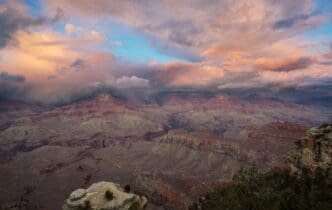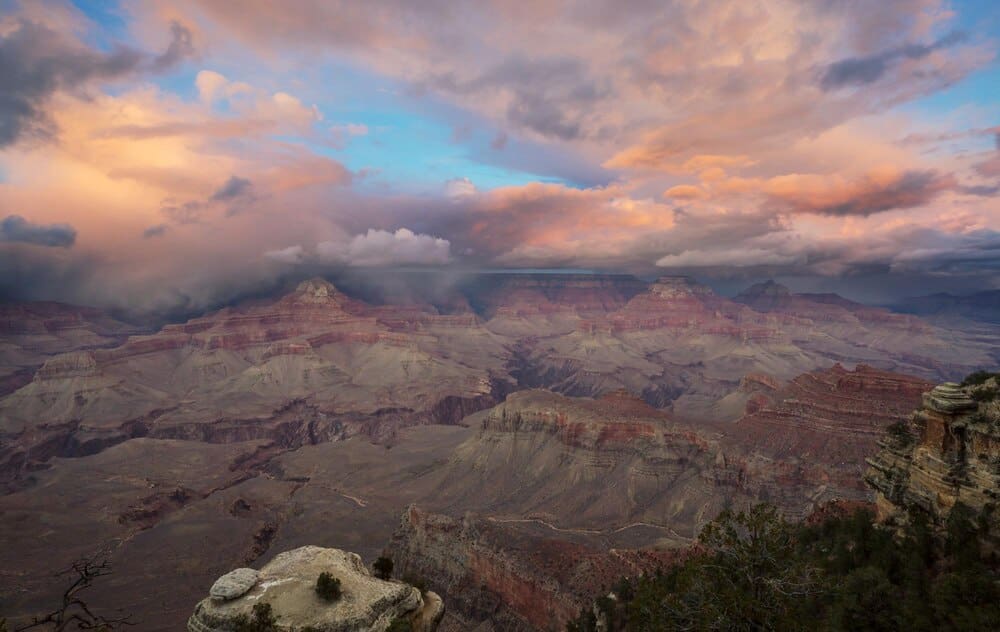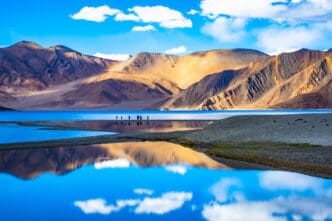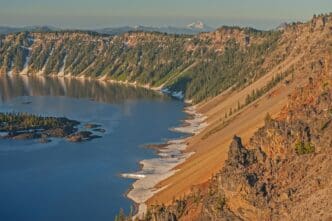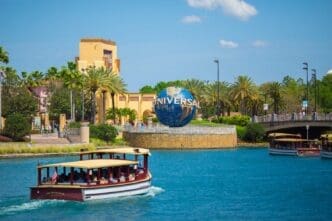For any traveler, a visit to Grand Canyon National Park in northern Arizona is a pilgrimage to one of Earth’s most profound and awe-inspiring landscapes. This immense chasm, carved by the Colorado River over millions of years, offers a spectacle of geology, scale, and raw beauty that draws millions of visitors annually. The key to a successful trip lies in understanding its two distinct personalities—the accessible South Rim and the remote North Rim—and planning your visit for the right season, whether you’re a family seeking scenic overlooks, an adventurer ready to hike into its depths, or a photographer chasing the perfect light. A well-planned journey ensures you spend less time navigating logistics and more time simply marveling at this natural wonder.
Understanding the Grand Canyon: South Rim vs. North Rim
The first and most critical decision in planning your trip is choosing which rim to visit. While they are only about 10 miles apart as the crow flies, the drive between them is over 200 miles and takes more than four hours. Each rim offers a fundamentally different experience.
The South Rim: Accessible and Iconic

The South Rim is the Grand Canyon that lives in the popular imagination. It is open 365 days a year and receives roughly 90% of all park visitors, making it the hub of activity, services, and infrastructure. Its accessibility is a major draw; it’s a more straightforward drive from major travel hubs like Phoenix (about 3.5 hours) and Las Vegas (about 4.5 hours).

Here you will find Grand Canyon Village, a historic district with famous lodges like El Tovar and Bright Angel Lodge, multiple restaurants, gift shops, and a well-stocked grocery store. The park’s main visitor center, Mather Point, and the Yavapai Geology Museum are also located here, providing essential orientation and context. The views are the classic, panoramic vistas seen in countless photographs, looking out across the widest part of the canyon.
The North Rim: Remote and Serene

For those seeking solitude and a more rugged experience, the North Rim is the answer. Sitting over 1,000 feet higher in elevation than its southern counterpart, it offers a cooler climate and a landscape dominated by dense forests of aspen, spruce, and fir. This elevation means its access is seasonal, typically open from mid-May to mid-October, though dates can change due to snowfall.

The North Rim attracts only 10% of the park’s visitors, resulting in a quieter, more intimate atmosphere. Services are limited to the historic Grand Canyon Lodge, a single campground, a gas station, and a small store. The drive is longer and more remote, but the reward is a unique perspective into the canyon and a profound sense of tranquility that is harder to find amidst the South Rim’s crowds.
When to Go: A Season-by-Season Breakdown
The Grand Canyon is a year-round destination, but the experience changes dramatically with the seasons. Choosing when to go depends entirely on your tolerance for crowds, your desired activities, and the weather you prefer.
Spring (March – May)
Spring is a fantastic time to visit, offering a sweet spot of pleasant daytime temperatures and fewer crowds than the summer peak. The weather can be unpredictable, with the possibility of late-season snowstorms in March, but by May, conditions are generally ideal for hiking and sightseeing. Wildflowers begin to dot the landscape, adding splashes of color to the desert palette.
Summer (June – August)
Summer is peak season, bringing the largest crowds and the highest temperatures. While the rim temperatures are often pleasant, the inner canyon can become dangerously hot, frequently exceeding 100°F (38°C). The North Rim is fully open and at its most vibrant during this time. Summer also marks the monsoon season, with dramatic and often daily afternoon thunderstorms that can cause flash floods but also create breathtaking cloud formations and rainbows.
Autumn (September – November)
Many seasoned visitors consider autumn the absolute best time to visit the Grand Canyon. The summer crowds have dispersed, the air is crisp and clear, and daytime temperatures are perfect for extended outdoor activity. On the North Rim, the aspen groves turn a brilliant gold, creating a stunning visual contrast with the canyon’s red rocks before it closes for the winter in mid-October. The South Rim remains spectacular and far more peaceful than just a few weeks prior.
Winter (December – February)
Winter transforms the South Rim into a quiet, magical landscape. A dusting of snow on the orange and red rock layers creates a scene of stark beauty and offers a unique photographic opportunity. The park is at its least crowded, providing a deep sense of solitude. However, some trails, especially those on north-facing slopes, can be icy and treacherous, often requiring traction devices like microspikes for safe hiking. The North Rim is closed to all vehicle traffic during this period.
Getting There and Getting Around
Your travel logistics will be heavily influenced by which rim you choose to visit. For most, the journey involves a flight followed by a scenic drive.
By Air and Car
The nearest major international airports are Phoenix Sky Harbor (PHX) and Harry Reid International in Las Vegas (LAS). Both offer extensive flight options and are popular starting points for a road trip. Flagstaff Pulliam Airport (FLG) is much closer to the South Rim but is a smaller, regional airport with fewer flights and often higher fares.
From your arrival airport, a rental car is the most practical way to reach the park and explore the surrounding region. The drive is part of the experience, taking you through the diverse landscapes of the American Southwest.
Navigating the Park: Shuttles and Parking
Once at the South Rim, the best way to get around is the free and efficient park shuttle bus system. Parking lots, especially near the Visitor Center and Grand Canyon Village, fill up quickly, often by mid-morning during peak season. Park your car and use the shuttles to avoid the frustration of searching for a spot.
The shuttle system has several color-coded routes. The Village Route (Blue) connects visitor centers, lodges, and restaurants. The Kaibab Rim Route (Orange) provides access to Mather Point, the Yavapai Geology Museum, and the South Kaibab Trailhead. The Hermit Road Route (Red), which is closed to private vehicles for most of the year, travels along a 7-mile scenic road with some of the best overlooks in the park.
Top Things to Do at the Grand Canyon
While simply gazing into the abyss is an activity in itself, the park offers a wide range of experiences for every type of traveler.
Sightseeing from the Rim
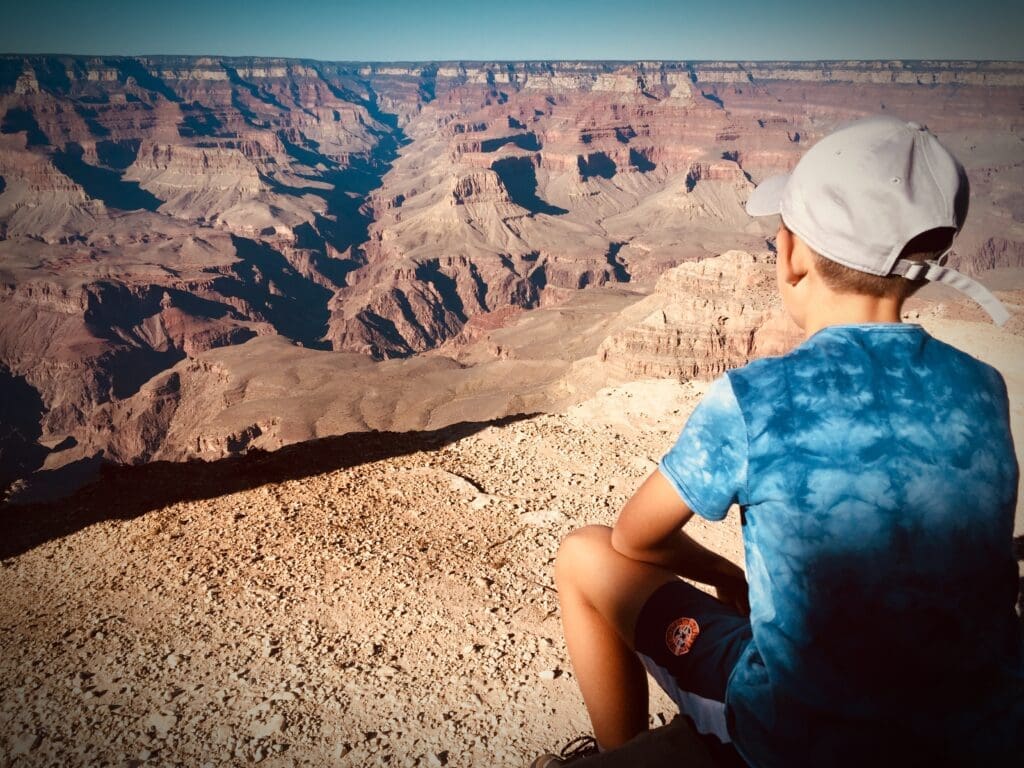
For many, the primary activity is enjoying the views from the rim. On the South Rim, start at Mather Point near the main visitor center for a stunning first impression. For a slightly less crowded but equally impressive view, walk a short distance to Yavapai Point. The Rim Trail is a mostly flat, paved path that stretches for 13 miles, offering continuous views and connecting the major viewpoints in the village area.
Hiking: From Easy Strolls to Epic Treks

Hiking into the canyon is an unforgettable experience, but it demands respect and preparation. The park’s most important safety message is to not attempt to hike from the rim to the river and back in a single day. The heat, elevation change, and strenuous climb out can be fatal. Always carry more water than you think you’ll need, along with salty snacks.

For a manageable taste of “below the rim” hiking, consider descending the first mile or two of the Bright Angel Trail or the South Kaibab Trail. For serious hikers, these trails lead all the way to the Colorado River and require overnight permits to camp at the bottom. On the North Rim, the short, paved walk to Bright Angel Point offers spectacular views, while the North Kaibab Trail provides the main corridor into the canyon from the north.
Beyond the Rim: Unique Experiences

For a truly iconic Western adventure, consider a mule ride along the rim or into the canyon, offered on both rims and booking up far in advance. For a different perspective, helicopter and fixed-wing air tours showcase the canyon’s immense scale from above; these tours depart from the nearby town of Tusayan. Finally, be sure to attend a free Ranger Program, which covers topics from geology and wildlife to history and stargazing.
Planning Your Visit: Logistics and Lodging
Advance planning is essential, especially for lodging and popular activities. Accommodations inside the park can be fully booked a year or more in advance.
Booking Accommodations
Lodges inside the park on the South Rim are managed by Xanterra Travel Collection and Delaware North. These range from the rustic cabins at Bright Angel Lodge to the historic elegance of El Tovar Hotel. Just outside the park’s south entrance, the town of Tusayan offers several modern hotels. For more budget-friendly options, consider staying in the larger towns of Williams or Flagstaff, each about an hour’s drive away.
Park Fees and Passes
The Grand Canyon National Park has a per-vehicle entrance fee that is valid for seven days and includes access to both rims. If you plan to visit multiple U.S. national parks within a year, the America the Beautiful annual pass is an excellent value that grants access to all federally managed lands.
What to Pack
Layered clothing is the golden rule for Grand Canyon packing, as temperatures can swing dramatically from day to night. Sturdy, broken-in walking shoes or hiking boots are non-negotiable. Sun protection is critical at this high elevation, so bring a wide-brimmed hat, sunglasses, and high-SPF sunscreen. Finally, a reusable water bottle is a must; free, filtered water refilling stations are located throughout the park.
A trip to the Grand Canyon is more than a vacation; it’s an encounter with geologic time and a lesson in humility. By planning ahead, choosing the rim that fits your travel style, and respecting the powerful environment, you can ensure your visit is safe, smooth, and deeply memorable. It is a place that stays with you long after you’ve left, a permanent fixture in your memory just as it is on the face of the Earth.

